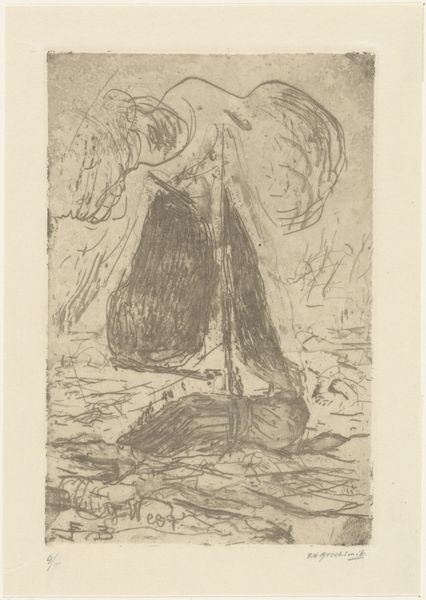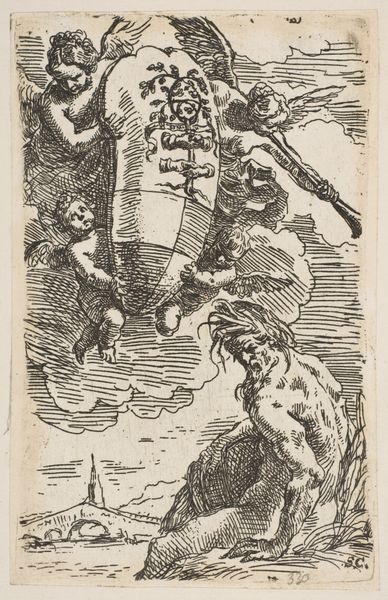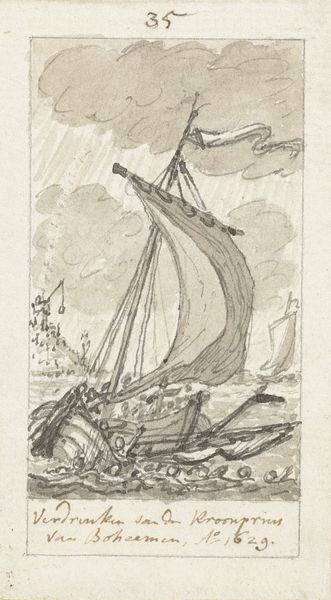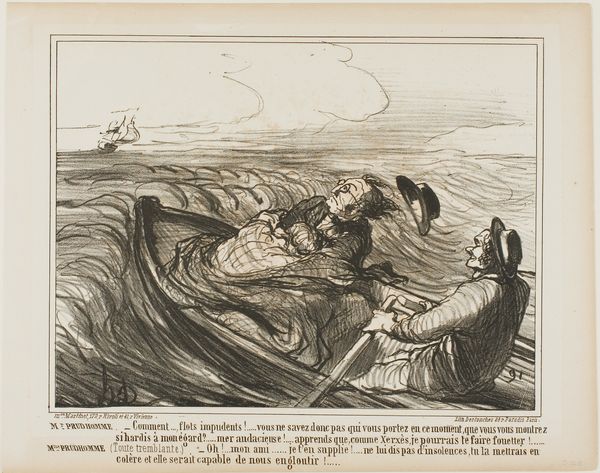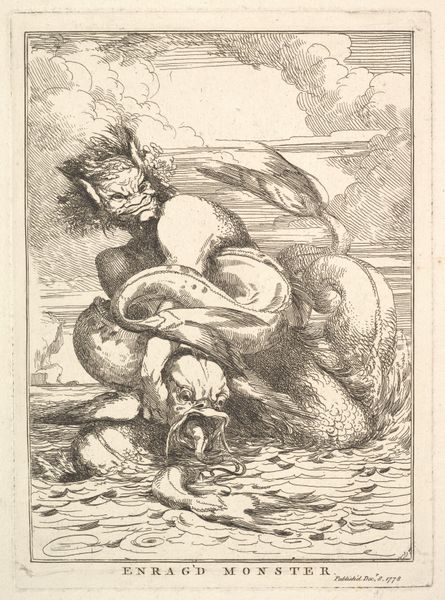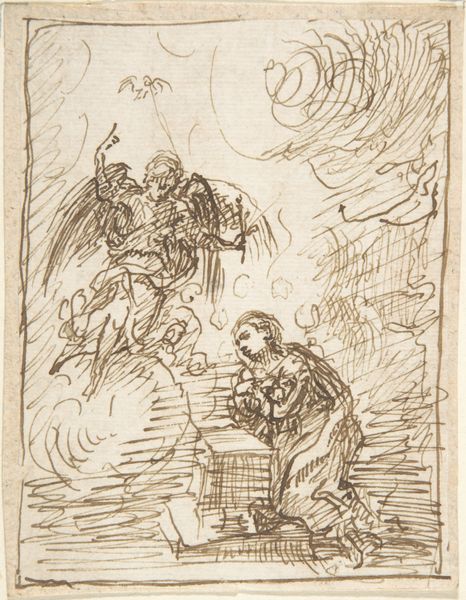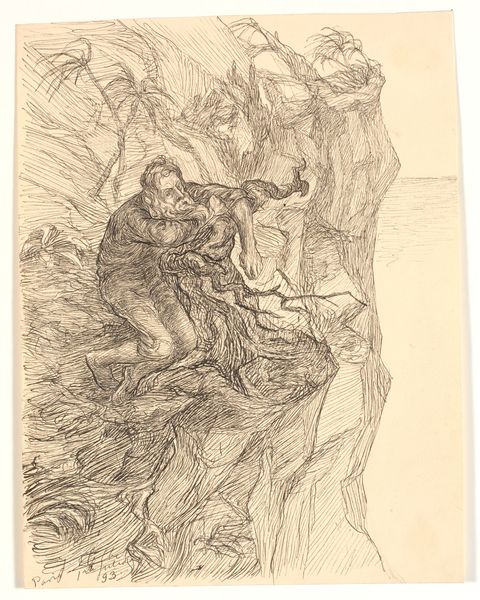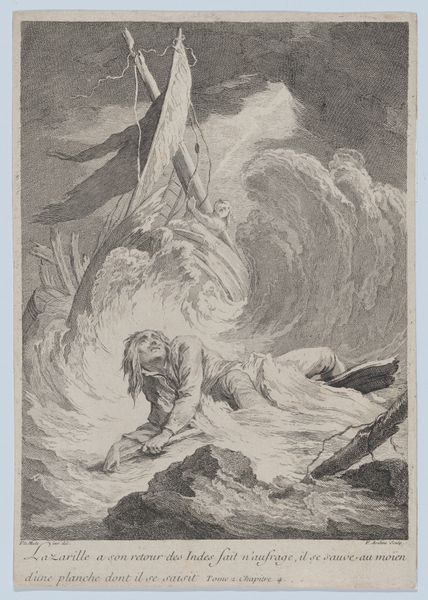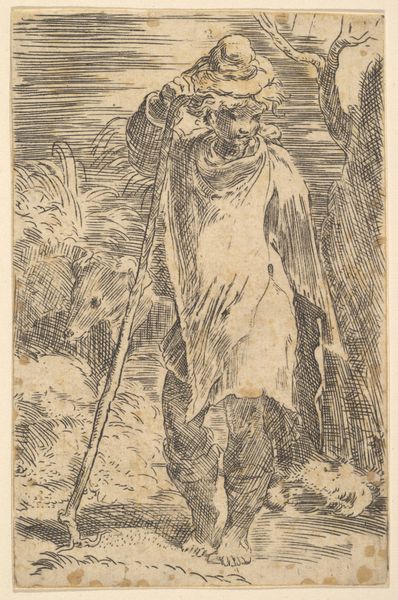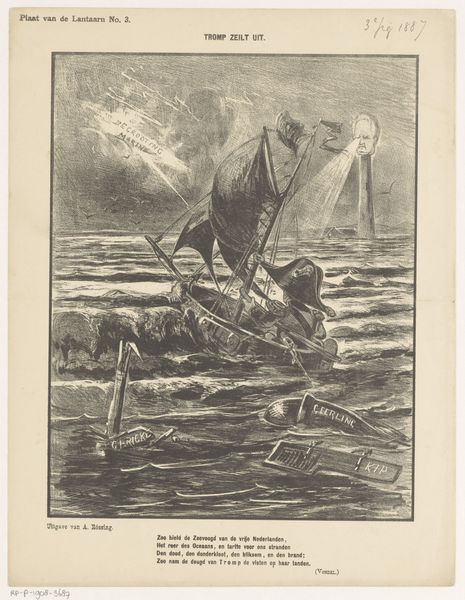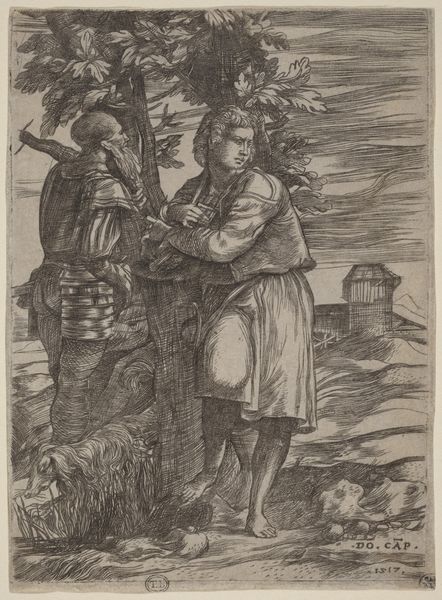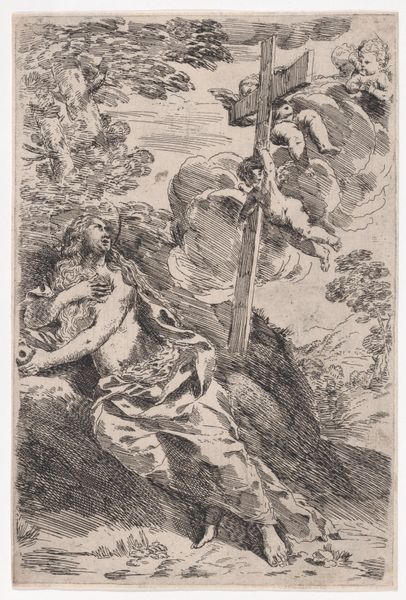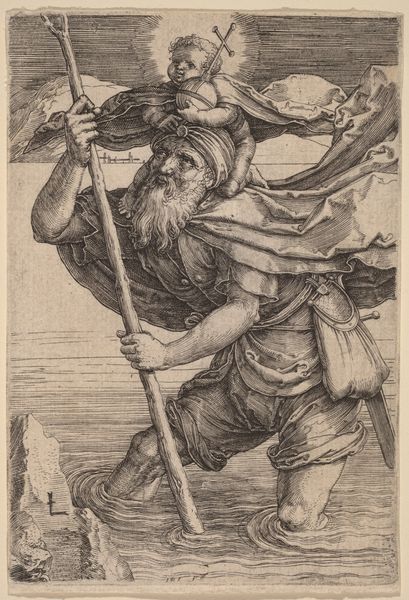
drawing, ink, pen
#
drawing
#
ink drawing
#
narrative-art
#
pen illustration
#
pen sketch
#
landscape
#
figuration
#
ink
#
pen
#
realism
Dimensions: 495 mm (height) x 320 mm (width) (bladmaal)
Editor: We're looking at "Præsten Hans Madsen stager over til Horneland," a pen and ink drawing made between 1868 and 1928 by Peter Hansen. It depicts a man with a pole battling what looks like turbulent water. There's something almost unsettling about the figure looming over him, a doppelganger maybe? How would you interpret this work? Curator: This image immediately raises questions of power and vulnerability. The historical context is key. Hansen created this during a time of significant social change and shifting religious authority. Is the priest battling the current or his own doubts? Consider, too, the double: is it meant to show an anxiety over class, or a tension between church and everyday person. The "doppelganger," the second representation of the man, seems not be struggling and this placement begs the question as to whom the drawing wants the audience to see. What societal critiques are being implied? Editor: That’s fascinating! I hadn't considered the social implications. It almost feels like a commentary on the changing role of religion during that time. Curator: Precisely! The turbulent water, in that light, might represent the challenges to established power, and the individual's struggle within those currents. And we might even reflect on how it’s gendered. Are there symbolic allusions within this picture, of masculinity within the role of priest? Think of this artwork in a time period when the church’s views about gender identity are being contested. Editor: So it's not just a literal depiction of a journey, but a metaphorical exploration of societal anxieties? Curator: Exactly. By placing this figure in such a dynamic composition, Hansen prompts us to consider the shifting grounds beneath the priest's feet, both literally and figuratively. Who might he become, without the foundation of social power? What might he represent? Editor: I’m definitely seeing this piece in a different light now, understanding it through a lens of social and religious upheaval really opens it up. Thank you! Curator: Absolutely, and hopefully it encourages us to continuously question power structures. This context encourages conversations about identity, and authority today.
Comments
No comments
Be the first to comment and join the conversation on the ultimate creative platform.
